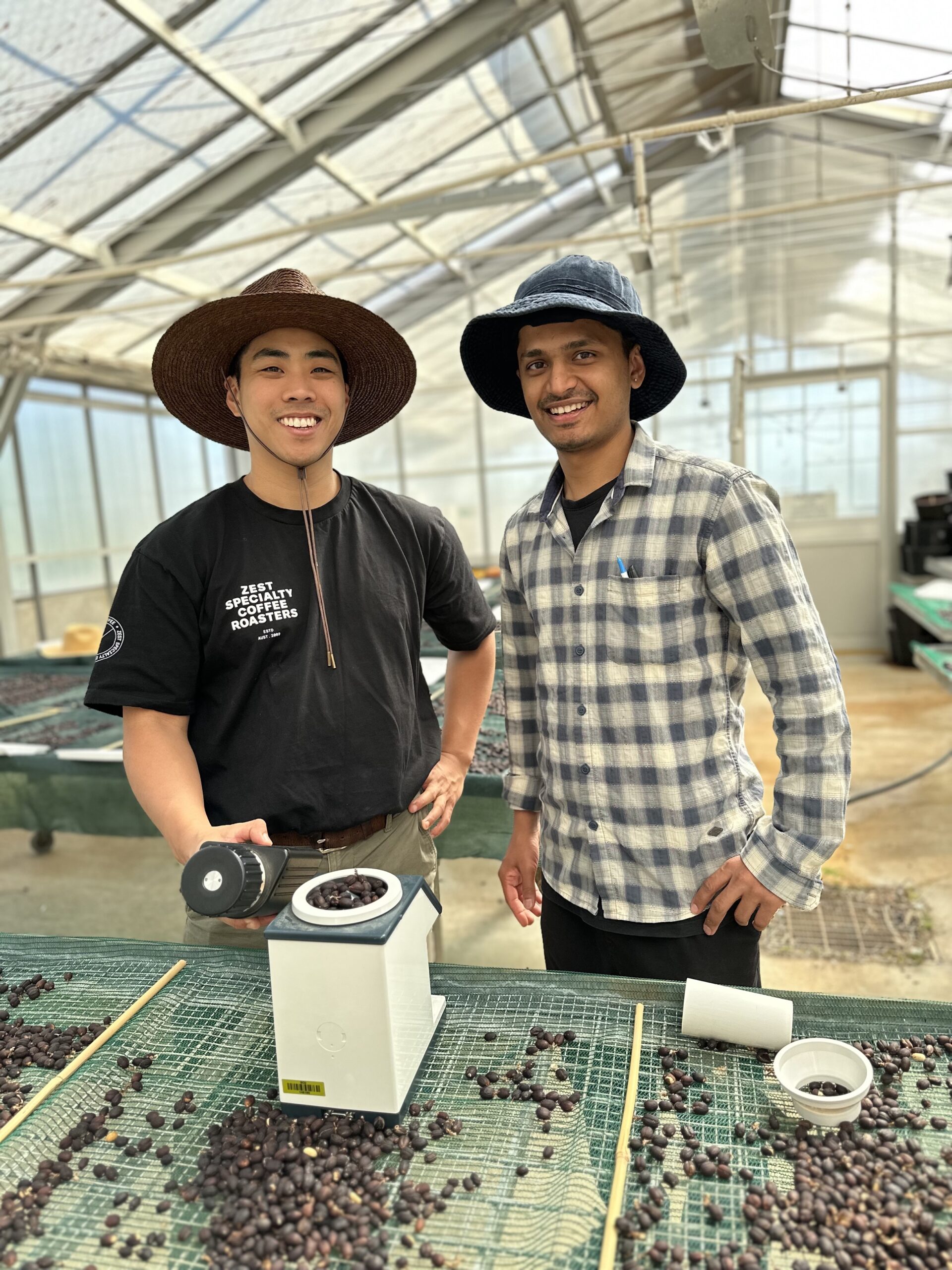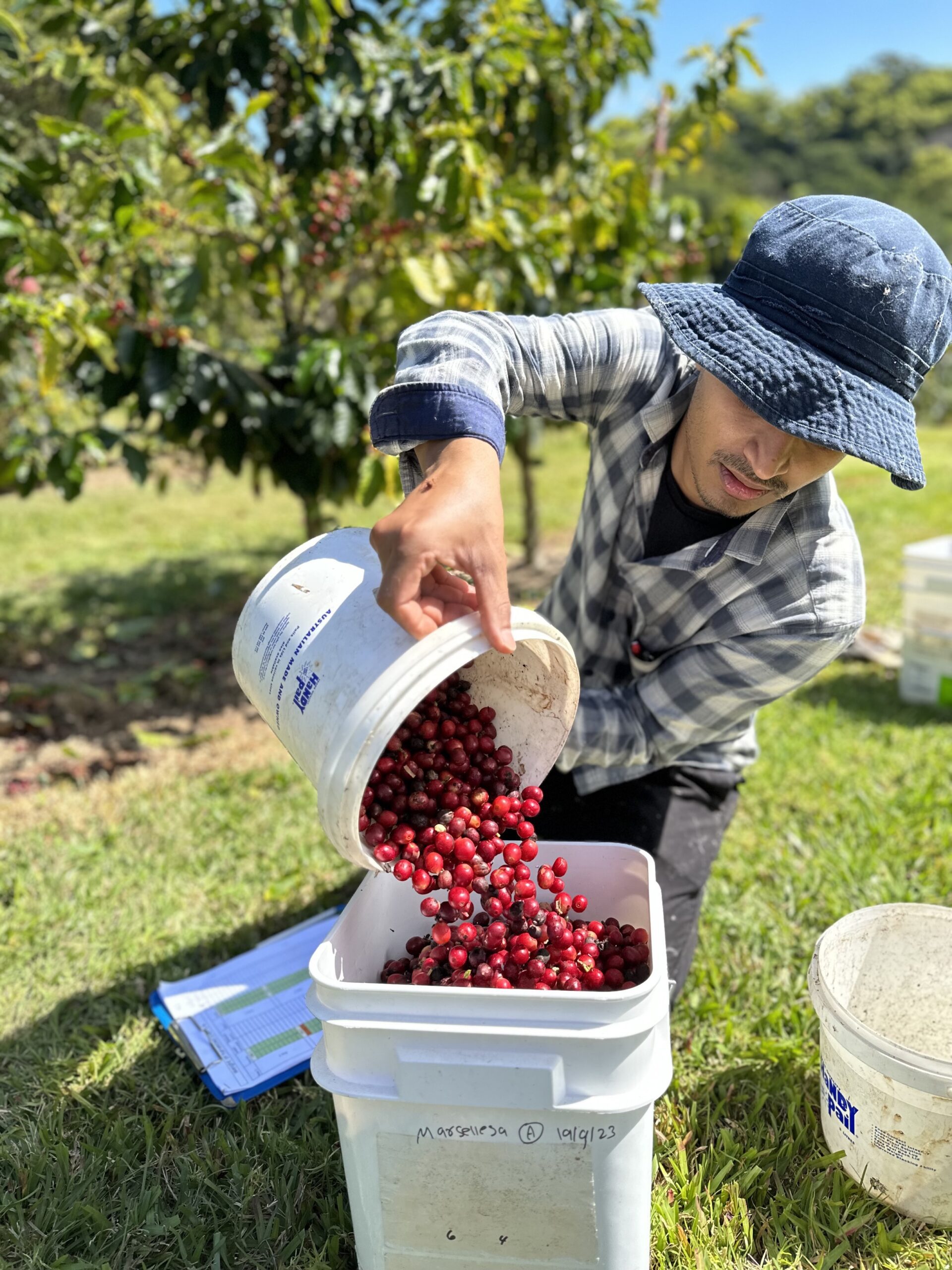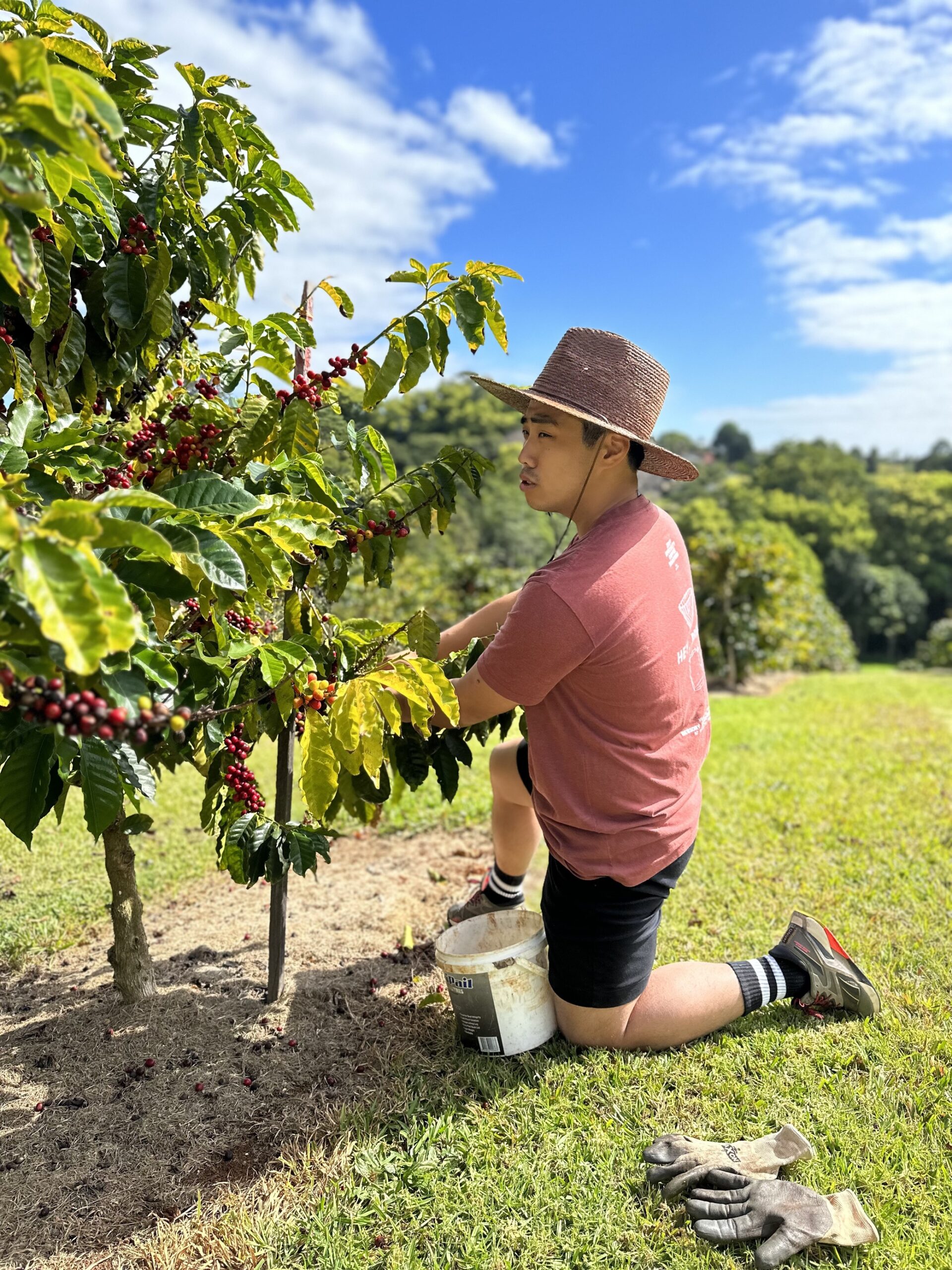





Elevating Australian Coffee: World Class Potential



Australia’s coffee story is both inspiring and unique. We’re a nation obsessed with coffee, with more cafes per capita in our cities than most countries on the globe. Our passion for providing fine coffee experiences is noted worldwide with Australian-inspired cafes a common theme around the world. Our repertoire as a coffee capital runs deep in our veins and we have the accolades to prove it with two World Barista Champion titles under our belt–among others, but despite our burning passion for the beverage, there’s one rather strange peculiarity – we don’t grow coffee here, we just drink it.
Well, that’s not entirely true either. We do grow coffee here, but very small amounts – around 1000 tonnes of green coffee per year. It may sound like a lot, but to put this into perspective, Brazil, the highest coffee producing nation, produces over 3 million tonnes per year, that’s 3000 times as much.
Australia’s Coffee Climate
So why is that? Well, there’s a myriad of reasons but the main few revolve around coffee’s ability to grow in various climates. Figuring it all out is just not that simple and takes a bit of time. Traditionally, coffee prefers conditions exhibited between the Tropics of Capricorn and the Tropics of Cancer, in an area we call “The Coffee Belt”. Conditions here are just right; warm, wet, and sunny all year round, with good elevations. Now, when you take a crop out of its native climate, in our case coffee, it’s hard to predict exactly what will happen and whether or not the crop will take to its new environment.
Australia’s a large country with a very distinct landscape, but we do have certain pockets, mostly scattered throughout Northern NSW and Queensland, where we know that coffee can grow reasonably well. It’s not the traditional climate coffee is used to, but we do have rich volcanic soil, the right humidity, and a good track record of using our land to tap into other industries, like the wine industry – so there is potential.
The Challenges for Australian Coffee
There have been a few who have tried to tap into this potential, but to say they haven’t been faced with challenges would be an understatement. The challenges mostly revolve around varietals and figuring out which like to grow in our climate. Just because a Gesha from Panama or an SL28 from Kenya produce great tasting coffee, doesn’t mean they will do the same here. And for a nation that’s obsessed with coffee, ordinary just won’t do, we want specialty coffee.
Of the varietals that have been planted in Australia, some have been keepers, but some have proven to be more work than they’re worth. Perhaps this is another reason why we can talk the talk but can’t walk the walk – it’s an expensive pursuit and takes time. From seedling to fruit-bearing-tree, it’s a 3-to-5-year process, a commitment too risky for most farmers to bet on, especially if high chance of failure is on the table.
One such variable is the K7 varietal, for the most part, it produces relatively tasty coffee, but the tree grows too tall and requires constant pruning, resulting in lower yields every year which is not sustainable.
World Class Potential
But there has been some progress, thanks to the aid of World Coffee Research and the roll out of the International Multi Location Variety Trial (IMLVT), it’s given us the opportunity to test various coffee varieties in our climate. The IMLVT program, initiated by World Coffee Research in 2015, aims to study the adaptability and efficiency of different coffee varieties across diverse global climates.
Recently, our esteemed Q-Grader and Partnerships Manager Darren Stinson, and Relationships Manager SyWoo Kim, took a trip to the NSW Department of Primary Industries (DPI) Centre for Tropical Horticulture. There, they met with Parth Patel, a PhD researcher from Southern Cross University.
Parth and his team of university researchers, together with NSW DPI Centre for Tropical Horticulture have been active participants in the IMLVT program, and for the past few years they’ve been cultivating 29 coffee varieties from 9 coffee-producing countries. They’ve been actively engaged with growing, processing, and evaluating the taste profiles of these coffees and providing feedback to IMLVT.
Although Parth is a fervent advocate for the coffee sector, his primary background lies in biotechnology rather than coffee. Hence, when deep-diving into the intricacies of coffee cultivation, particularly the various processing techniques, he reached out for expert guidance.
Zest Coffee’s Contribution For Australian Coffee
This is where Zest Coffee stepped in. Drawing from our extensive experience in innovative processing and our involvement in projects like the Australia Jack Murat Project, we were thrilled to share our knowledge. While we may not be coffee growers in the traditional sense, our expertise spans areas including quality assurance, fermentation practices, and processing techniques.
During our collaborative sessions at the DPI Centre for Tropical Horticulture, both Darren and SyWoo shared their insights and played hands-on roles in implementing various of processing methods, covering fermentation, and drying procedures for multiple coffee batches. SyWoo, feeling a bit creative, inoculated a fermentation with Yakult – a popular prebiotic-rich drink. You’ve got to try these things!
Based on our success with Australian grown coffee at the Jack Murat Project, we could be up for some seriously tasty coffees. We’re incredibly excited to see how our experiments will fare with the varieties planted at the DPI Centre for Tropical Horticulture. If successful, it could put Australia on the map as a new coffee producing nation.
What We’re Most Excited About
But perhaps the most exciting thing of all is the discovery of new flavours. Coffee spans a huge spectrum of flavours, the greatest in the world of all food groups, and we’re discovering new flavours every day. At Zest, we live and breathe flavour, and we’re incredibly honoured to have contributed to what could be the discovery of the Australian flavour trademark. A new collection of flavours, unique to our landscape, unique to our soils, irreplicable, anywhere else in the world.